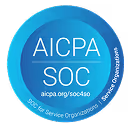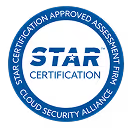Resource forecasting is the process of estimating the resources required to complete a project or a series of projects over a given period. These resources can include staff, equipment, materials, and budget. For example, a software development company might forecast the number of developers, designers, and project managers needed to deliver a new application within the next six months. Resource forecasting is a crucial component of resource management, which involves planning, allocating, and optimizing resources to achieve project goals.
In this article
Why is resource forecasting important?
Stages in the resource forecasting process
Developing a robust resource forecasting strategy
Obstacles in resource forecasting
Tools and techniques for resource forecasting
Advantages of good resource forecasting
The importance of accurate resource forecasting
Accurate resource forecasting is crucial for project success and effective resource management. It ensures that the right resources are available at the right time, which can help prevent delays, cost overruns, and quality issues. Effective forecasting also enables better resource allocation and cost efficiency. By anticipating resource needs in advance, project managers can optimize the use of available resources and avoid over – or under–allocation.
Resource Forecasting: A Deeper Dive
Resource forecasting vs Resource planning
While often used interchangeably, resource forecasting and resource planning are distinct concepts within the resource management lifecycle. Resource forecasting involves estimating future resource needs based on historical data, current trends, and project requirements. Resource planning, on the other hand, is the process of determining how to allocate available resources to meet those forecasted needs.
Resource forecasting vs Resource scheduling
Resource forecasting and resource scheduling are also different stages in the resource management process. Forecasting focuses on predicting resource needs over a longer time horizon, typically weeks or months in advance. Resource scheduling, in contrast, involves assigning specific resources to tasks on a day–to–day or week–to–week basis, based on the project plan and the availability of resources.
Why is it important to forecast resources effectively?
Effective resource forecasting is essential for several reasons:
- It helps ensure that the right resources are available when needed, minimizing project delays and disruptions.
- It enables better financial planning and budgeting by providing a clear picture of future resource costs.
- It facilitates proactive decision–making, allowing project managers to address potential resource gaps or conflicts before they impact the project.
- It supports long–term capacity planning and hiring decisions, ensuring that the organization has the necessary skills and expertise to meet future demand.
- It contributes to effective resource allocation, ensuring that resources are assigned to the most critical and valuable projects.
Essential stages in the resource forecasting process
The resource forecasting process typically involves the following stages:
1. Data collection and historical analysis
The first step is to gather data on past projects, including resource utilization, project durations, and any relevant metrics. This historical data forms the basis for forecasting future resource needs.
2. Future demand estimation
Next, project managers estimate the resource requirements for upcoming projects based on the project scope, timeline, and deliverables. This may involve collaborating with other departments, such as sales and marketing, to anticipate future demand.
3. Risk assessment and scenario modeling
Project managers then assess potential risks and uncertainties that could impact resource needs, such as changes in project scope or market conditions. They may develop different scenarios to model the impact of these risks on resource requirements.
4. Use of forecasting software and Predictive analytics
Many organizations use specialized software tools, such as professional services automation (PSA) solutions, and predictive analytics to support the resource forecasting process. These tools can help analyze historical data, identify trends and patterns, and generate more accurate forecasts.
Developing a robust resource forecasting strategy
To develop an effective resource forecasting strategy, consider the following steps:
- Identify core resource needs based on the organization's strategic goals and project pipeline.
- Use historical data and industry trends to predict future resource demand.
- Implement flexible forecasting tools that can adapt to changing project needs and priorities.
- Actively monitor resource utilization and project progress, and refine forecasts as needed.
- Integrate resource forecasting into the overall resource management lifecycle, ensuring alignment with resource planning, allocation, and optimization processes.
Obstacles in resource forecasting
Despite its importance, resource forecasting can be challenging due to several common obstacles:
- Inaccurate or incomplete historical data, which can lead to flawed forecasts.
- Insufficient forecasting tools and techniques, resulting in manual and error–prone processes.
- Evolving project needs and scope changes, which can render initial forecasts obsolete.
- Limited visibility across departments and siloed data, making it difficult to get a comprehensive view of resource needs.
- Over–reliance on forecasting tools without adequate human judgment and expertise.
Tools and techniques for effective resource forecasting
To overcome these challenges and improve the accuracy of resource forecasts, project managers can leverage various tools and techniques:
- Machine learning models that can analyze vast amounts of data and identify patterns and trends.
- Simulation and scenario planning tools that allow project managers to model different scenarios and assess their impact on resource needs.
- Resource demand forecasting tools, such as PSA software, that provide real–time visibility into resource availability and utilization across the organization.
- Integration of resource forecasting with other resource management processes, such as resource allocation and capacity planning, to ensure a holistic approach to resource optimization.
Advantages of well–executed resource forecasting
When done effectively, resource forecasting can provide significant benefits for project managers and their organizations:
- Improved resource allocation, ensuring that the right resources are assigned to the right projects at the right time.
- Better financial control, with more accurate budgeting and cost forecasting.
- Enhanced project delivery, with fewer delays and disruptions due to resource constraints.
- Minimized idle time for resources, leading to higher utilization rates and productivity.
- Optimized resource management lifecycle, with seamless integration of forecasting, planning, allocation, and optimization processes.
Key takeaways
Resource forecasting is a critical process for project managers and organizations looking to optimize resource allocation, improve project outcomes, and drive business success. By understanding the importance of accurate forecasting, leveraging the right tools and techniques, and developing a robust forecasting strategy, project managers can effectively navigate the challenges and reap the benefits of well–executed resource forecasts within the broader context of resource management.
Streamline Your Resource Forecasting with Rocketlane PSA
Rocketlane PSA is a comprehensive solution designed to optimize resource forecasting for professional services teams. With its data-driven insights, predictive analytics, and intuitive visualization tools, Rocketlane empowers you to make accurate predictions about future resource needs and proactively address potential gaps. The platform seamlessly integrates resource management and allocation, ensuring that the right resources are assigned to the right projects. Rocketlane's skill-based matching, time tracking, reporting, and automated alerts streamline your resource management process, fostering improved communication, collaboration, and transparency. Invest in Rocketlane PSA today and experience the benefits of optimized resource forecasting and management, enabling you to focus on delivering exceptional client service and driving business success.
{{demo}}
FAQs
1. What is the difference between resource forecasting and resource planning?
Resource forecasting involves estimating future resource needs, while resource planning is the process of allocating available resources to meet those needs. Both are essential components of the resource management lifecycle.
2. How can project managers improve the accuracy of resource forecasts?
Project managers can improve forecast accuracy by collecting and analyzing historical data, using specialized forecasting tools and techniques (such as PSA software), and actively monitoring and refining forecasts based on actual resource utilization and project progress.
3. What are some common obstacles in resource forecasting?
Common obstacles include inaccurate or incomplete data, insufficient forecasting tools, evolving project needs, limited cross–departmental visibility, and over–reliance on tools without adequate human judgment.
4. What are the benefits of effective resource forecasting?
Effective resource forecasting can lead to improved resource allocation, better financial control, enhanced project delivery, minimized idle time for resources, and an optimized resource management lifecycle.
5. How often should resource forecasts be updated?
The frequency of forecast updates depends on the nature and complexity of the projects, as well as the level of uncertainty in the business environment. In general, forecasts should be reviewed and updated regularly, such as monthly or quarterly, and whenever significant changes occur in project scope or resource availability. Regular updates ensure that resource forecasts remain accurate and relevant throughout the resource management process.
.webp)











